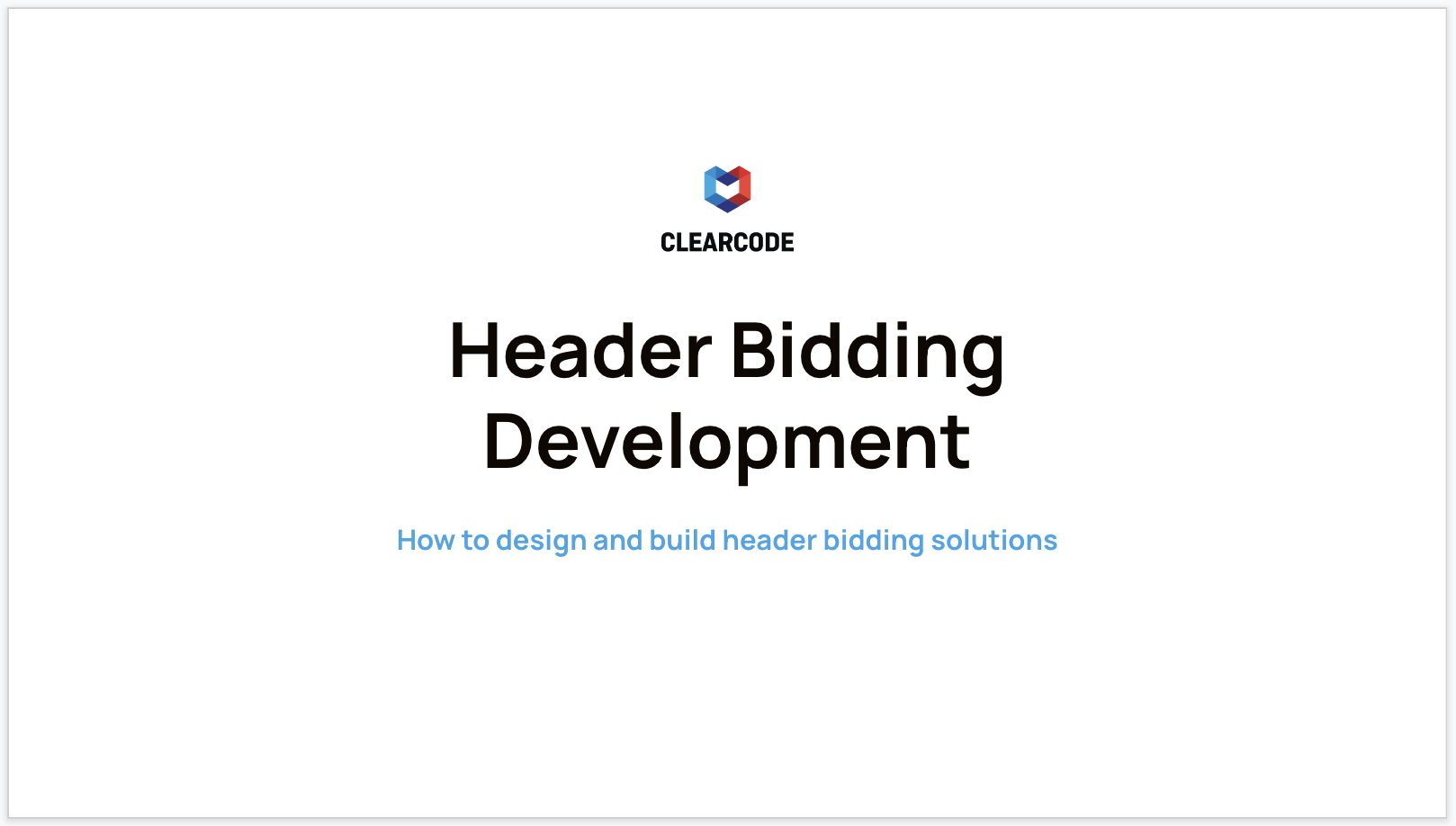Even if you have just a basic understanding of the inner workings of the online display, then you’ve probably heard of real-time bidding – the auction-like process that occurs in an ad exchange for the buying and selling of available ad inventory.
But have you heard of header bidding?
Header bidding allows publishers to increase their revenue by simultaneously collecting multiple bids from a variety of demand sources (e.g., demand-side platforms [DSPs] and ad networks) each time a new impression is available.
Currently, there are two variations of header bidding:
Client-side header bidding involves adding a piece of JavaScript to a publisher’s website, which executes each time a page loads and sends a request to a third-party header provider. Various bids then start coming in and the highest bid wins.
Server-side header bidding works in a similar way, except that the requests are sent from an ad server and not the browser (currently, Google offers a server-side header bidding solution with their DoubleClick for Publishers [DFP] ad server).

How Can Header Bidding Benefit Publishers?
For publishers, the header bidding process brings about three main benefits:
Higher cost per mille (CPM): Publishers can receive bids from buyers that may be more interested in their inventory (and willing to pay a higher price) than the buyers connected to the publisher’s ad server.
Higher fill rates: The more buyers available, the higher the chances are of filling all types of available inventory, including both premium and remnant (unsold) inventory.
Greater insights into inventory value: If a publisher sets a floor price (the lowest price they are willing to sell their inventory for) of $1.50 CPM, but after utilizing header bidding finds that their inventory is being sold for an average of $2.00 CPM, then they will get a clearer picture of how much their inventory is actually worth on the market.
How Can Header Bidding Benefit Advertisers?
Although the header bidding process was designed to benefit publishers, it also provides advertiser with one main advantage:
Access to premium inventory: Advertisers can see the available inventory and bid on it if it’s considered premium (e.g., if the user matches the advertiser’s target audience). As all bids are looked at prior to a sale, if the advertiser bids a high amount, they have a good chance of winning the bid and displaying their ad to their desired audience.
Are There Any Drawbacks Of Client-Side Bidder Heading For Publishers?
While header bidding enables publishers to increase their revenue and fill rates, there are a few drawbacks to the client-side implementation:
Latency: While header bidding may reduce the number of passbacks common in waterfall auctions, and thus improves page-load time, it has a few latency issues of it’s own.
Adding more scripts to a page slows down its page-load time, which has a negative effect on the user experience, results in fewer impressions loading, and lowers the likelihood of ads being viewed. Also, client-side header bidding requires making multiple connections, which can cause additional problems when the Internet connection is slower, such as on mobile devices.
Compatibility: In order to work efficiently, client-side header bidding has to be backward compatible with browsers and, in general, compatible with different browsers. Also, certain browsers may behave in certain conditions differently (e.g. some browsers may pool connections to external pixels or block them completely).
Duplicate bids: If a publisher uses multiple header partners, they run the risk of putting the same impression or inventory up for sale, thus duplicating their bid processing efforts. This drawback relates to both client-side and server-side header bidding.
Performance: Adding additional logic slows down the performance of the browsers and the website itself, which is not a big deal on modern hardware, but can be a problem on slightly older hardware and older smartphones.
In general, the client-side technology can be never 100% trusted because it’s controlled by the user, not the vendor. This is why certain processes, such as data validation, should done server-side, not client-side, as client-side data submission can be faked to avoid validation logic.
What The Future Holds For Header Bidding
Header bidding really started gaining ground in display advertising in 2015 and is set to move into mobile and video as more and more publishers start to adopt it.
There is, however, the issue of Google and the fact that they “ended” header bidding in April of 2016 by opening up First Look to all DFP clients and beginning tests on exchange bidding in Dynamic Allocation – basically, their own version of header bidding that allows publishers to bring in programmatic bids before sending an ad request to the ad server, in this case, Google’s DoubleClick for Publishers (DFP). As mentioned previously, this will be a server-side implementation, which will improve page-load time.
There’s no doubt that Google’s recent actions have had an impact on the industry, but until Google’s DFP holds 100% market share (currently estimated to hold about 30%), there will always be room for others to lead the way in header bidding innovations.
And as for client-side header bidding, there are a number of opportunities for improvement, with resolving the latency issue being one of the main ones.
Questions, queries, comments?
Join the conversation about this post on Facebook, Twitter, and LinkedIn.
The post was originally published on Website Magazine






